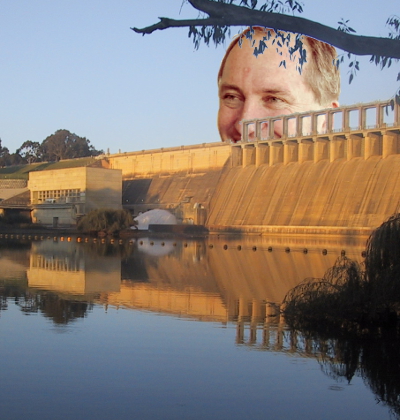Expert dampens Barnaby's dam zeal
 An environmental expert has slammed Federal Agriculture Minister Barnaby Joyce’s big dam plan.
An environmental expert has slammed Federal Agriculture Minister Barnaby Joyce’s big dam plan.
In a recent interview on public radio, Mr Joyce said his department “had a compendium of a 100 possible dam sites - we never said we were going to build 100 dams”.
The minister is adamant that he wants to “build as many [dams] as I possibly can”, but acknowledged that funding issues could dampen the idea.
“We've got range of dams... and we've got to work out how much the Commonwealth needs to put towards it, how much private enterprise needs to put towards it, and how much the states are going to put towards it,” said Joyce.
“When at some point in time the Prime Minister of the country says; ‘Well Barny we'll put some money on the table’, then I can work out how much we can start to put in on direction or the other direction.”
But Dr Joshua Larsen, from the University of Queensland's School of Geography Planning and Environmental Management, says Australia's unique circumstances will make boosting dam infrastructure an even greater challenge.
“Prime land [for dams] requires a combination of suitable inflows (generally a reliable water supply) and suitable topography to store the water - steeper means less surface area for the same volume and potentially lower construction costs,” Dr Larsen has told industry press Sourceable.
“Australia, like the rest of the world, built a lot of dams between the ‘fifties and the end of the ‘eighties. Australia also has the lowest area averaged surface water runoff for any continent in the world, and is also the flattest. Therefore, we have built most of the dams we could in all the suitable locations we could, and close enough to the people or industries that would actually use the water.”
He says that as the best land for dam projects is already occupied, future opportunities are quite limited.
“Any new dam projects are therefore likely to be upgrades to existing structures, quite small in storage volume, or pushing into more marginal terrain,” Larsen said.
“Total construction costs (including labour) were obviously much lower when the majority of our existing dam infrastructure was built,” he said.
“In contrast to construction costs, commodity prices relevant to these irrigation projects have fluctuated about a stable or declining trend, meaning we'll have to pay much more but make the same or even less money from these projects.”
But it does not stop there, as the expert points out that the push for more dams is part of an even larger question.
“The argument for or against new dams in Australia can't be separated from the debate surrounding the future of agriculture in Australia - what do we want this to look like and what direction do we want to go?,” asks Larsen.
“Then we can ask if we have the water to achieve this... but we can't rely on a ‘build it and they will come’ approach.”








 Print
Print